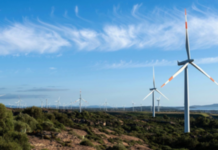New Delhi– A part of kerosene subsidy savings in India could be invested in helping the vulnerable section of society access clean lighting through off-grid solar lighting technologies, a new study has suggested.
The study by leading think tanks International Institute for Sustainable Development (IISD) and The Energy and Resources Institute (TERI) explored the business model for a ‘kerosene-solar subsidy swap’.
It says a shift to solar lighting will reduce the need for ongoing expenditure on subsidies because any government support would help cover one-off capital costs, not consumption costs.
Their report released on Tuesday said since 2013-14 the central government has cumulatively saved Rs 26,470 crore by gradually reducing kerosene subsidy expenditure.
This makes sense fiscally and environmentally but leaves some households with high lighting costs.
Can a share of the savings be used to finance solar lighting for poor households? This could fast track access to clean lighting for households with no electricity or low-quality electricity supply, complementing the government’s other drives towards universal electrification.
From an initial 200, the report shortlists 15 pico solar PV products like solar lanterns, basic solar home systems that can provide an affordable, reliable and direct replacement for kerosene, approximately comparable to the cost those households spend on subsidized kerosene to meet their lighting needs.
The report also reviews the suitability of Uttar Pradesh and Odisha to host a subsidy swap pilot study, assessing the real-world impact of increased adoption of solar energy and a reduction in kerosene consumption.
“A kerosene-solar subsidy swap is a zero-net cost policy that would fast track electricity access to some of the most vulnerable homes in India,” report co-author and IISD Associate Shruti Sharma said in a statement.
“It will also help smoothly transfer responsibility from the central to state governments for financing affordable lighting.”
Kerosene is not an ideal fuel. Its fumes are a health hazard and kerosene subsidies are an expensive way to help the poor.
Moreover, almost 51 per cent of subsidised kerosene is lost and marketed for other purposes. Policy makers are aware of these problems, and the government has been winding down kerosene subsidy expenditure through increased prices, reduced allocation of subsidised fuel to states and by encouraging cities such as Chandigarh and New Delhi to voluntarily give it up.
“A kerosene-solar subsidy swap can effectively support prompt transitions to cleaner and more efficient options for lighting, but also has the potential to aid reliable power solutions that go beyond lighting, such as mini-grids.
“A pilot to generate evidence on the structure and value of such a swap would be worthwhile,” report co-author and TERI Associate Fellow said Bigsna Gill said. (IANS)






